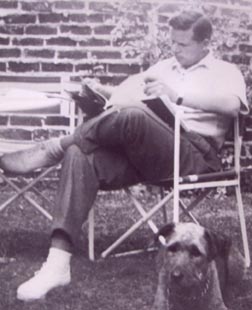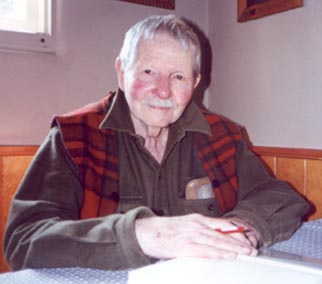



However, during his studies at Fordham Law, Sanford had a chance encounter on a New Jersey golf course with a childhood acquaintance named Nathan Weinstein, who was now going by the name of Nathanael West. West told Sanford he was writing a book; this announcement was a revelation to Sanford, who became West's frequent companion.
Inspired by West, Sanford tried his hand at writing short stories. His first pieces appeared in Harold Salemson's Paris literary magazine, Tambour, in 1929 and 1930. Other pieces followed in The New Review, Pagany and the prestigious Contact, which was edited by West and Williams.
Sanford's first novel appeared in 1933. The Water Wheel was published by the obscure Dragon Press, which had also published Williams's The Knife of the Times. Sanford's second novel was a departure from the autobiographical nature of his first. The Old Man's Place was the first of three novels set in the Adirondack mountains of New York. He used this setting to explore the violence at the heart of the American psyche, a theme that would dominate Sanford's work for the remainder of his career.
While The Old Man's Place received good reviews, it appeared in the depths of the Depression and did not sell well. However, it was on the basis of this book that Paramount Studios offered Sanford a contract as a screenwriter. Sanford moved to Hollywood in 1936.
Second, Sanford became a member of the Communist Party. One can see in Sanford's novels an increasing preoccupation with America's mistreatment of minorities and the poor and working classes. These preoccupations made it difficult for Sanford to find publishers for his work. In fact, he was forced to self-publish 1951's A Man Without Shoes, after having the book rejected more than 30 times.
When the Blacklist finally ended and Roberts was allowed to return to work at Columbia, Sanford began writing again. His Every Island Fled Away displays the bitter bleakness of the Blacklist years.
The novel had become increasingly inadequate for Sanford's intentions as a writer. More and more, Sanford's novels became lectures or sermons delivered to the captive audience of the reader. By the time The $300 Man appeared in 1967, Sanford had exhausted the novel form; he was 63 years old.
Three more books of creative interpretations of history appeared before Sanford embarked on his monumental five-volume autobiography, subtitled, Scenes from the Life of an American Jew. PEN gave the first book, The Color of the Air Sanford's only literary award.
In 1998, the Los Angeles Times gave Sanford its Robert Kirsch Award for Lifetime Achievement. During his later years, Sanford was variously described as the "most unjustly neglected major writer in America" and "America's greatest unread writer." Just before Sanford's death, the Los Angeles Times called him "an authentic hero of American letters."
In all, Sanford published 24 books during his lifetime, and left three unpublished memoirs at the time of his death. Most of his books are out of print, although some continue to be available.
|
The Waters of Darkness | Black Sparrow Press | 1986 | in print |
|
A Walk in the Fire | Black Sparrow Press | 1989 | in print |
Bibliography Cutting Edge Books has issued a revised and updated second edition of Jack Mearns's descriptive analysis of John Sanford's work, John Sanford: An Annotated Bibliography.
Order on Amazon.
Follow the links below for brief descriptions of John Sanford's books:
Return to the John Sanford Homepage
Go to the John Sanford Biography Page
Go to the Marguerite Roberts Filmography Page
rev. 4/6/22